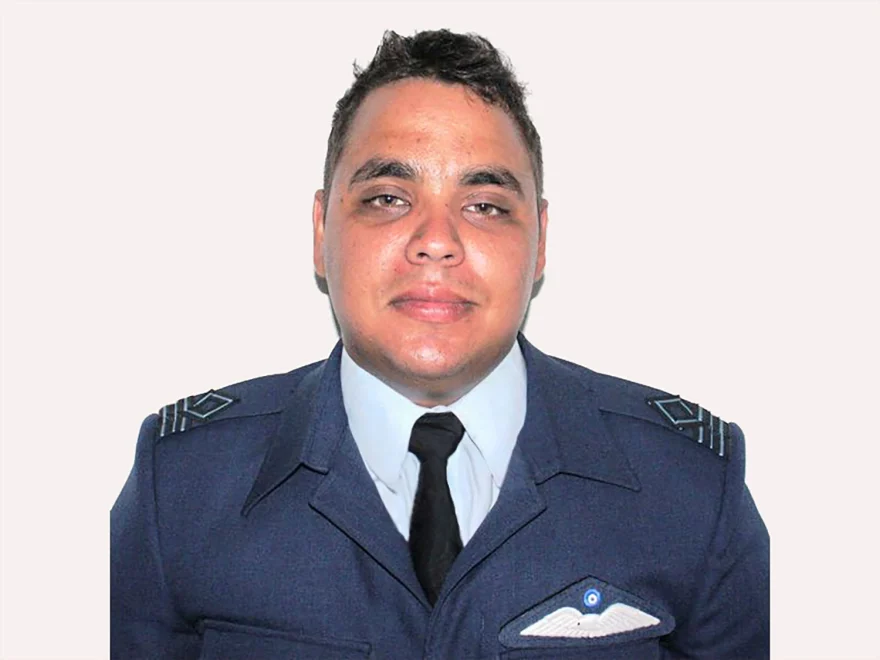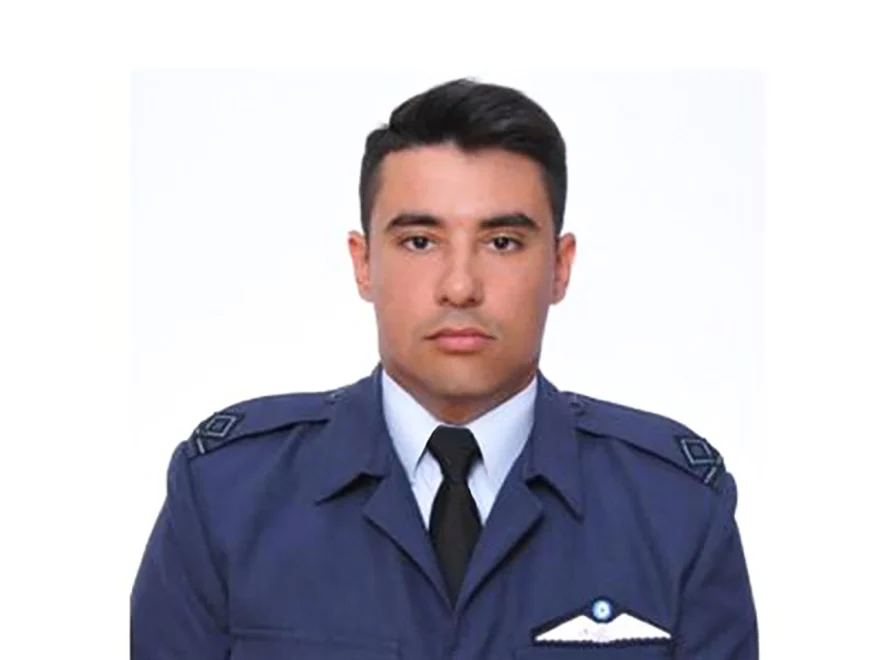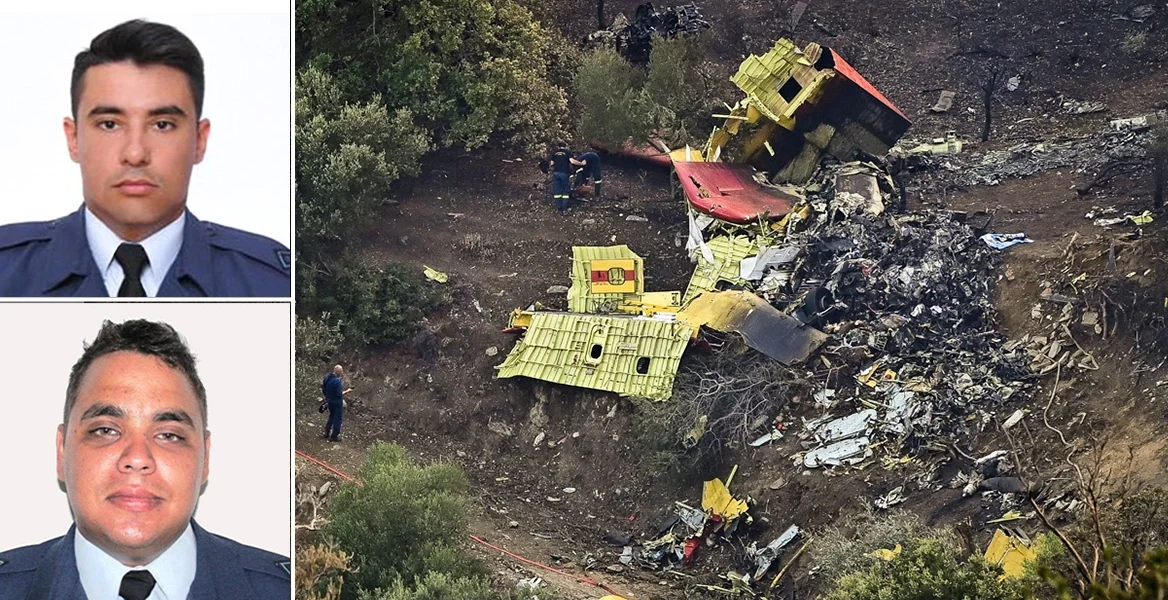A devastating accident involving a Canadair CL-215 firefighting aircraft has left the nation in mourning as it claimed the lives of two brave pilots. The incident occurred during a firefighting operation in Karystos, and Air Force experts are now investigating the cause of the crash. The fallen airmen are 34-year-old squadron commander Christos Moulas and 27-year-old co-pilot second lieutenant Periklis Stefanidis.
Initial assessments by experts and eyewitnesses indicate that the Canadair CL-215 might have struck a tree with its float, affecting its stability and leading to the tragic fall. The official report will be forthcoming in the next few days.
Both pilots showed unwavering dedication to their duties, flying at low altitudes of about 10 to 15 meters above the ground while battling the fire. Tragically, this left little room for survival when the aircraft encountered trouble.
Captain Christos Moulas hailed from Chania, where his parents run a business in Gavalochori, and he was soon to become a father, with his wife in the early stages of pregnancy. The news of his untimely passing shook the community, and a traditional Strata event was held in Chania in their memory.

Second Lieutenant Periklis Stefanidis dreamed of flying aeroplanes and grew up in Thessaloniki. He pursued his passion and served as a pilot in firefighting aircraft after graduating from Ikaron School.

The Tragic Last Flight: Remembering the Fallen Canadair Pilots
From the video footage that swiftly spread across all media channels, it became apparent that the aircraft released its water payload, executed a right turn, and then unexpectedly lost altitude, eventually crashing in a cloud of smoke. Moments before the right turn, it appears that the aircraft struck a branch, causing it to lose its right-wing float. The impact resulted in the loss of the boundary layer, crucial for lift, and initiated the fateful right turn with the pilot attempting to counteract the loss of support by applying full power to the engines. Unfortunately, these efforts were in vain as the Canadair headed towards the ravine. The intense heat from the burning area affected the old reciprocating engines, sealing the tragic fate of the firefighting aircraft and its experienced pilots.
An aviation expert, P.Stathis Pekias, shed light on the critical elements that contributed to the catastrophe. He emphasized that the presence of piston engines in the CL-215, unlike the more advanced turboprop engines found in the CL-415, complicated the situation. Despite the CL-215's remarkable service since 1975, boasting two classic Pratt & Whitney engines with 2,100 pounds of thrust, technological advancements have rendered them outdated.
The design of the CL-215 dates back to the 1940s, with the final version, officially named CL-215, approved in February 1966. Manufacturing began, and the aircraft saw its first delivery to the French Civil Protection Service in June 1969. However, production ceased in 1990, and the aviation landscape has evolved significantly since.
The sacrifice of these courageous pilots has garnered profound respect and condolences from political and military leaders, both within the country and internationally. The entire political and state leadership and foreign counterparts have expressed their support to the families of the fallen pilots.
In honour of the two pilots and as a gesture of respect, the Ministry of National Defense has declared a three-day mourning period for the Armed Forces (from July 25 to 27, 2023). This tragic loss serves as a sombre reminder of the ongoing and relentless battle that Greek firefighting crews face as they courageously combat wildfires across the country, protecting lives, property, and the environment.


